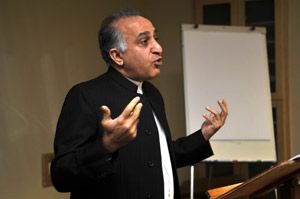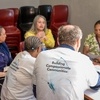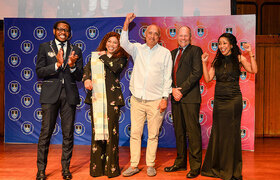Higher education '“ stasis in some areas, fluidity in others
01 July 2008 | Story by Helen Théron |
| Dr Saleem Badat, keynote speaker at the Higher Education Close Up 4 conference |
Since 1994 the South African higher education landscape has experienced relative stasis in certain areas, such as the decolonisation and deracialisation of inherited intellectual spaces, but great fluidity in others, like private education.
This was the gist of Dr Saleem Badat's keynote address, The Trajectory, Dynamics, Determinants and Nature of Institutional Change in Post-1994 South African Higher Education, at the opening of the recent Higher Education Close Up 4 conference. It was hosted by the UCT Centre for Higher Education Development.
Nonetheless there had been upturns, for example, the nurturing of a new generation of academics who are increasingly black and women. Values, goals and policies in higher education had also been recast as had legal structures and policy frameworks.
But economic and social inequalities still limited access to high-quality schools and institutional cultures at some universities continued to ensure greater access - and success - for students from the "capitalist" and middle classes.
"The inadequacy of funding for financial aid, academic development initiatives and institutional redress, and prevailing institutional cultures, mean that a significant advance in social equity and redress for African and Coloured students - and those of working class and rural poor social origins - remains to be achieved."
He said the social composition of academic staff had remained largely white.
"In 2005, black academics constituted only 37% of the total academic staff of 15 315, comprising between 12% and 90% of universities. Women academics comprised 28% to 52% of universities, overall made up 42% of academics and continued to be concentrated at the lower levels of the academic hierarchy."
 This work is licensed under a Creative Commons Attribution-NoDerivatives 4.0 International License.
This work is licensed under a Creative Commons Attribution-NoDerivatives 4.0 International License.
Please view the republishing articles page for more information.










